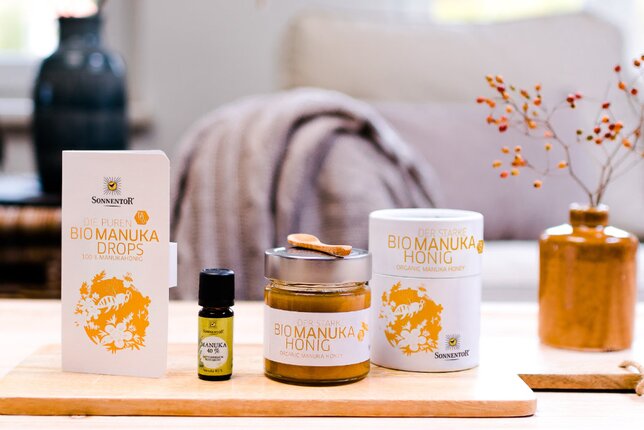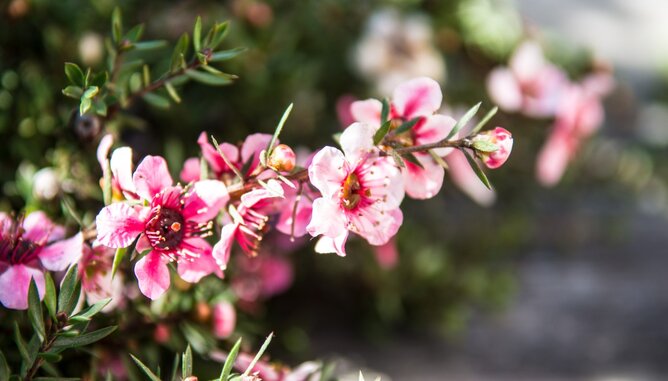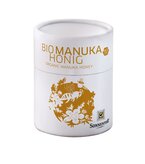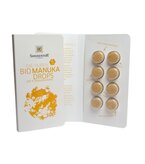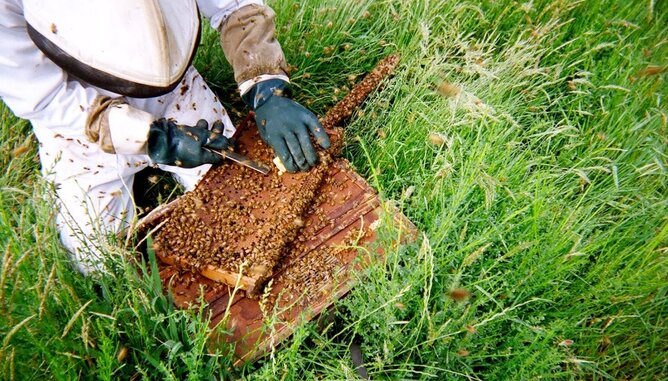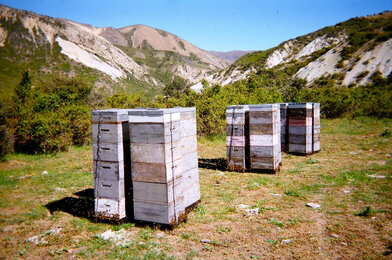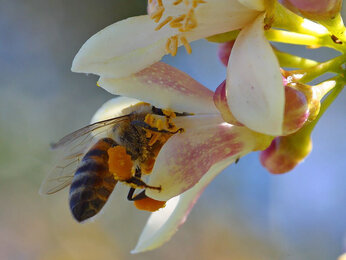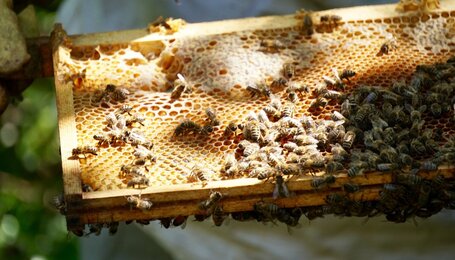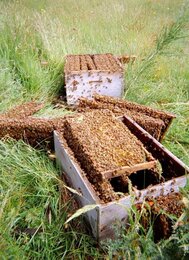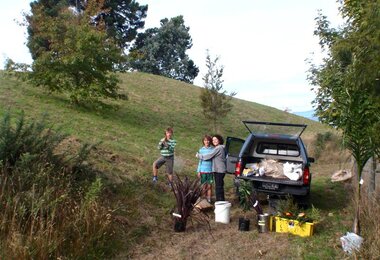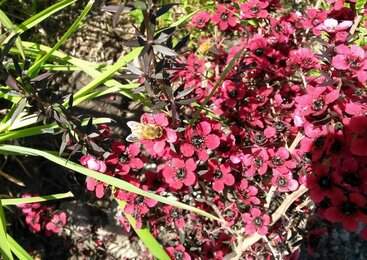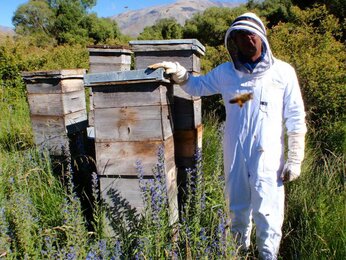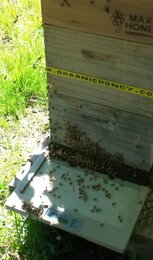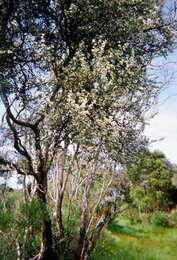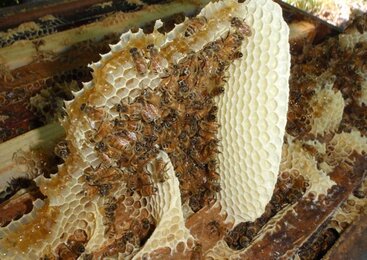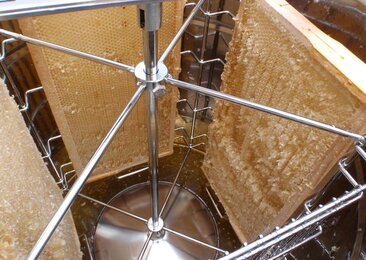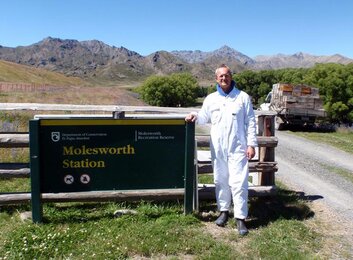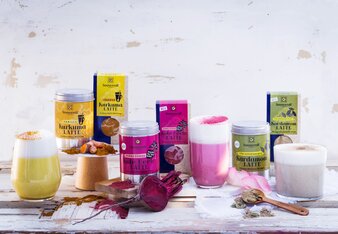Manuka honey is produced from the nectar of the South Sea myrtle which thrives in the mountainous regions of New Zealand. Maori, the indigenous people of New Zealand, have long been aware of the exceptional qualities of this shrub. They used the leaves, bark or roots to treat diseases.
British missionaries introduced the honey bee to New Zealand. Since then, Manuka honeyhas been obtained from this plant, which is said to have healing properties.
EFFECTS AND ACTIVE PROPERTIES
Whether forest or meadow flavoured, honey is a valuable food. It consists of 80 percent sugar and about 15 percent water. The rest is a powerhouse of goodness made up of all the ingredients that make honey so special - important acids, trace elements and antioxidants.
However, Manuka tops it all! This particular type of honey contains unique enzymes that make the New Zealand made honey particularly beneficial.
Wie nehme ich Manuka am besten ein?
Application and benefits
Manuka smells intensely resinous and shimmers with a delicate caramel brown. It is full-bodied in flavour and slightly spicy, similar to thyme or heather honey. You can use Manuka like local honey. You can eat it by the spoonful, use it as a spread or for sweetening drinks.
Attention: honey contains heat-sensitive enzymes, it should not be heated above 40 ° C or stirred into hot liquids and food.
TIP FROM OUR BEEKEEPER
Manuka honey is best taken on an empty stomach. It can be taken “as is” or dissolved in lukewarm water or milk.
ATTRIBUTES
Since Manuka honey is a natural product, we recommend you always choose good quality honey. As proof of quality we use the TA factor ("Total Activity”). The honey is analyzed for ingredients such as hydrogen peroxide, leptosperin, antioxidants and acids. Our Manuka honey has a TA value of 25+. The rule is: Fresh and natural Manuka honey has a higher overall activity.
The purity of Manuka is proven by means of pollen analysis.
Was ist der Unterschied zwischen TA und MGO?
TA vs. MGO
While the TA factor is a well-known high-quality marker for varieties such as manuka, marri and jarra honey, especially in Australia and New Zealand, in Europe, the MGO factor is more commonly used. We have deliberately decided to us the TA factor.
Why?
A high MGO factor often contradicts our basic understanding of honey quality. Fresh Manuka honey has MGO values between 60 and 150 mg/kg immediately after honey has been harvested. Higher values are often achieved by longer storage times over 37 ° Celsius. Manuka honeys are available from 250+ to 1000+ MGO. The higher the MGO factor, the higher the price the honey can be sold for. The problem: While storage increases the MGO value, the overall activity of the honey decreases. In addition, methylglyoxal can be artificially produced. Enough reasons for us to go by the TA factor.
BEE HAPPY! OUR CONTRIBUTION TO PROTECTING NATURE
Our manuka honey comes from Nature reserves in New Zealand. There, our longtime partner Bernhard Schneider is passionate about the well-being of these industrious insects. Originating from the Waldviertel, he emigrated to New Zealand over 20 years ago.
Bernhard Schneider is the only organic beekeeper within 45,000 hectares of land. In total, he has access to 732 hectares of land for his honey production, of which 300 hectares are part of an afforestation program. This project not only produces delicious honey, but the planting and conservation of trees also compensates for large amounts of CO2.
The well-being of hard-working honey bees is very important to us. That's why we do not interfere with the natural cycles of bees. Honey is left in the hives for the bees to live off when food sources are limited. Therefore, sugar feeding is not necessary.
We also avoid the use of any chemicals. Instead, natural thyme oil is used against Varroa mite. Humm, buzz!
